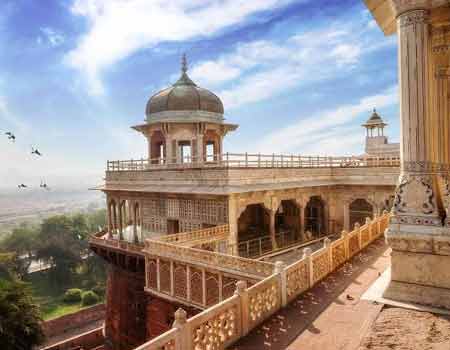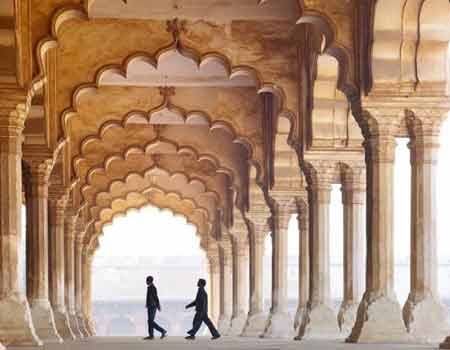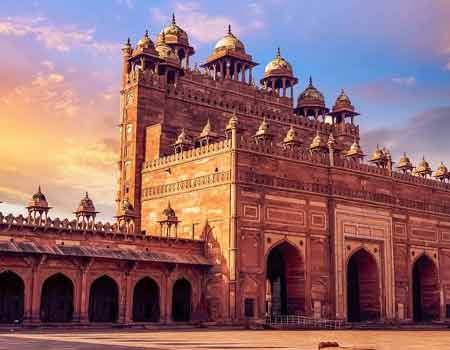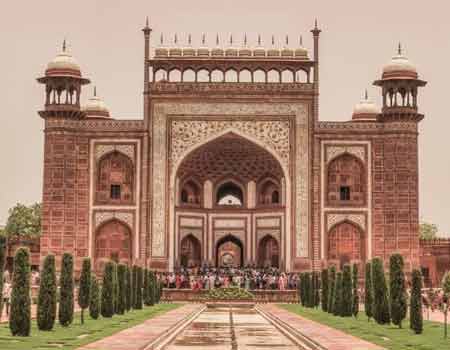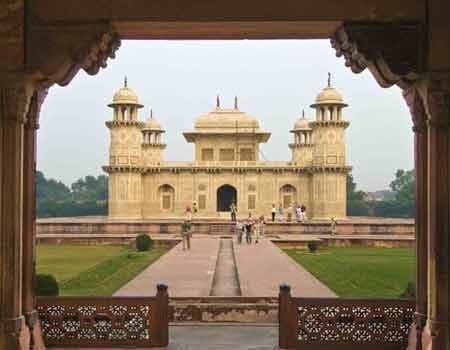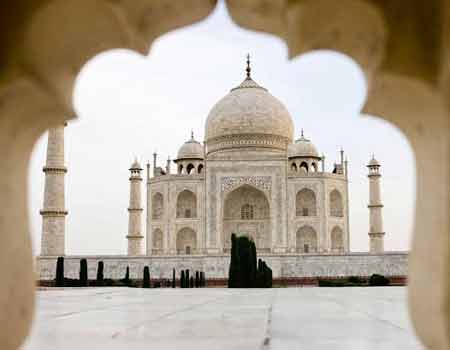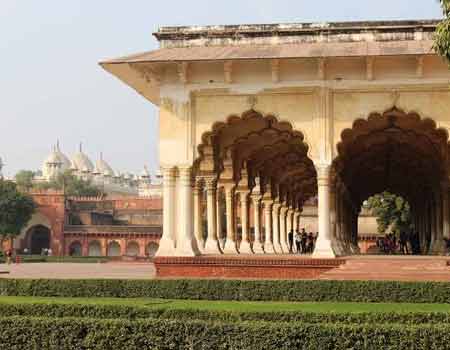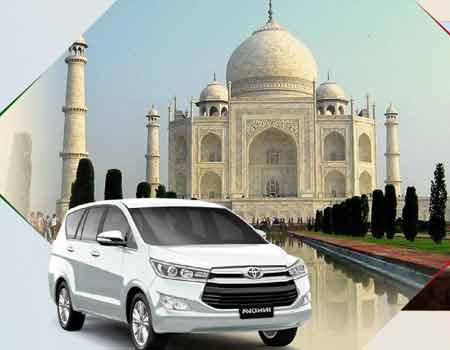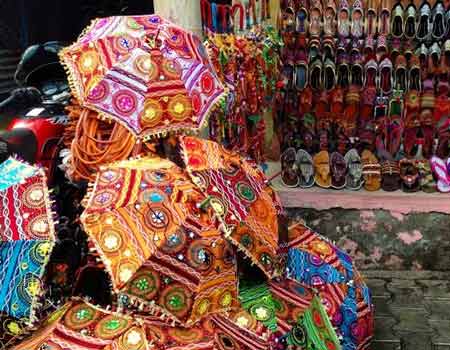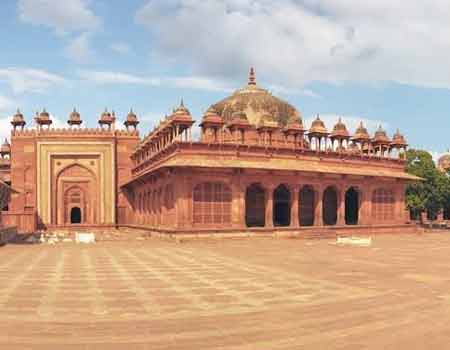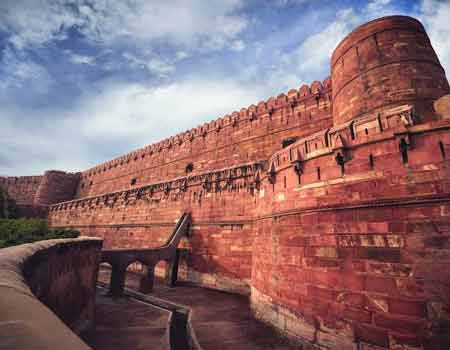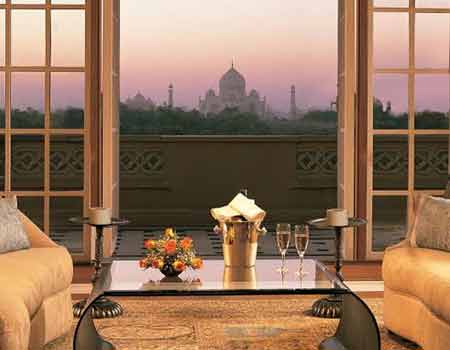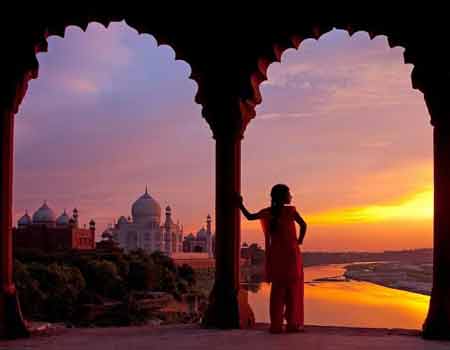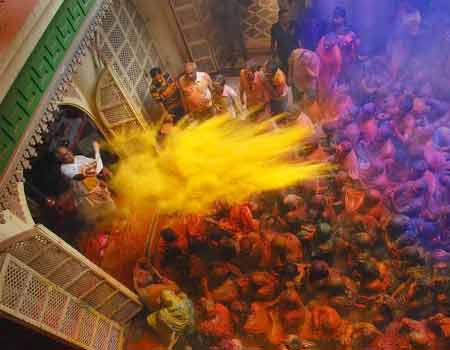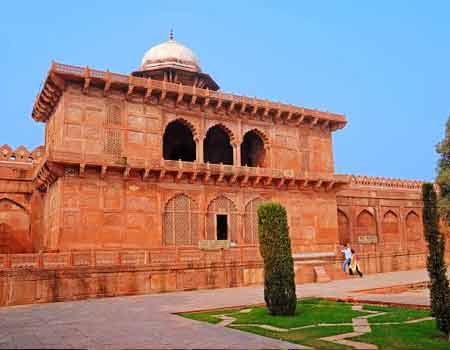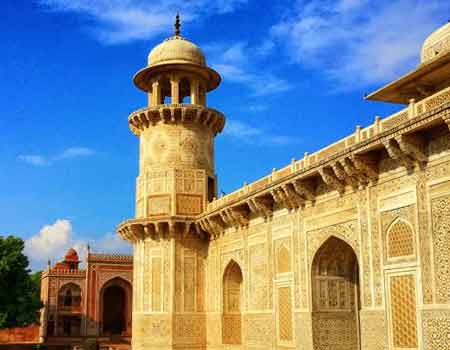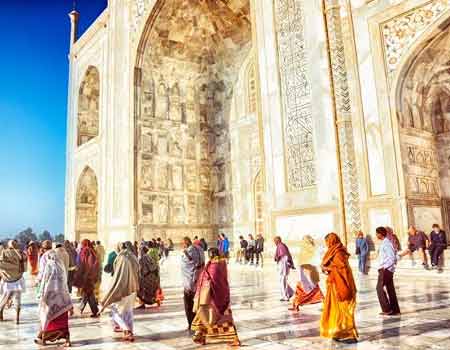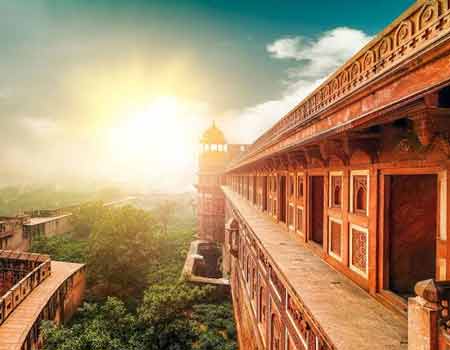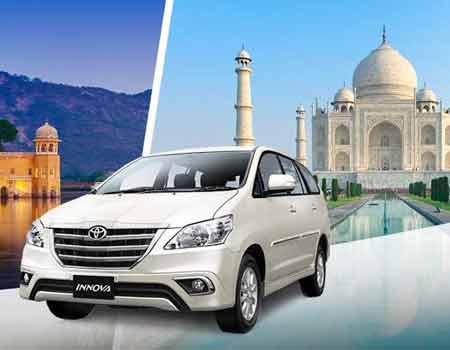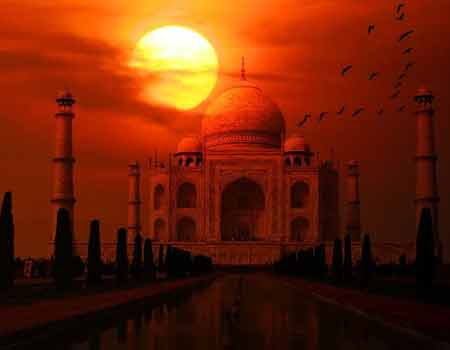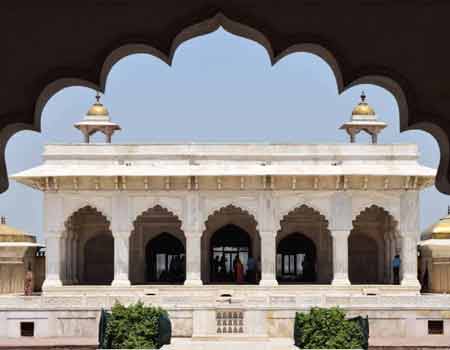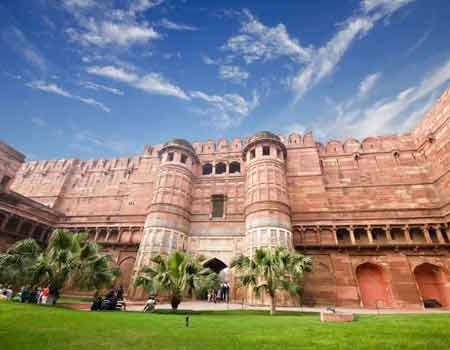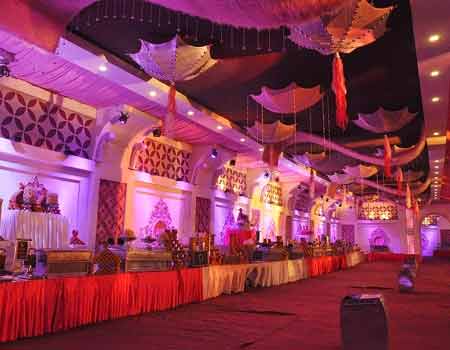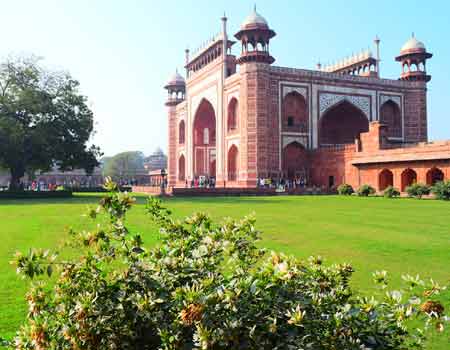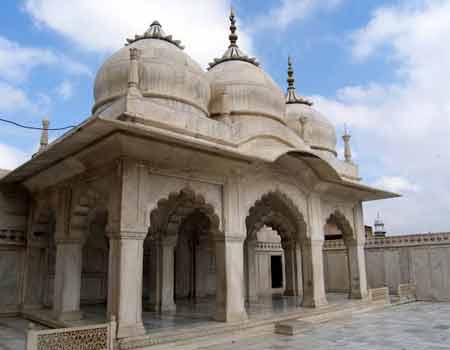

Agra Travel Guide Strategically located at the heart of India in the alluvial plains between the Ganga and Yamuna, Agra has been a religious and commercial centre. In its early stages, the town was a grand theatre where the fascinating Mughal dynasty played out an entire range of emotions on a titanic scale of love, hate, passion, tremendous energy, mercurial moods, lust for power……yet the tourist only have to wander through its forts, gardens, tombs and monuments to also experience the greed for nature, refinement, striving for perfection and devotion to the arts. Endure this gamut of facets on the Agra Package!
To ensure an abundance of knowledge, a trip to the Taj Mahal and Fatehpur Sikri, would reward an exciting but leisurely study of this town. Tourists may be prepared to have their breath blown away when they visit this Seventh Wonder of the World, the famed Taj Mahal, where they would join the crowds in admiring the fountain, the water canals and the perfect symmetry of the charbagh gardens, clicking photographs and donning shoe covers, before climbing up its marble steps. This epitome of pride and grace was built by acknowledged sculptors, commanded by the Mughal Emperor Shah Jahan devoted this monument as a memoir to his much-adored wife, Mumtaz Mahal. Tons of marble and red sandstone were lugged, and the precious stone inlay work required lapis lazuli, turquoise, jasper, malachite, chrysolite, from different part of the world, as well as agate, chalcedony, sardonyx, quartz, jade, amethyst and black marble, to contribute to the enigma of this grand spectacle!
Another interesting visit would be to the Agra Fort, with its architectural novice of its ramparts cased within polished red sandstone, toned marble and inlaid with gold or semi-precious gems. The Fatehpur Sikri, also made of red sandstone, has an astonishing persona comprising of pavilions and courtyards, domes, balconies, terraces, gardens, elegant cupolas, tanks, pools and baths and the architecture shelters the imperial household from the harsh sun, though it also allows for the play of filtered or refracted light and air through latticed windows and doors. The visitors may be surprised as they turn a corner and find an enchanted walled garden, or climb out of an apartment to discover a tree framed in a window, as they walk through the Buland Darwaza- the highest gate in India, Jodha Bai’s Palace, Maryam’s House, Birbal’s House, Daulat Khana, Diwan-Khana-i-Khas, Diwan-i-Am and Pachisi, and perhaps even share a moment with Tansen singing Rag Deepak on the platform above Anup Talao. The tomb of Jalaluddin Muhammad Akbar at `Sikandra’ is a marvel of elegant pavilions and chhatris, where the inscription on the mausoleum reads: `These are the Gardens of Eden: enter them to dwell eternally’, The style gets absorbed in the essence of the beautifully carved red sandstone, the majestic gateways with elegant mosaic work, and the charbagh garden setting being immaculately maintained. The tomb of Itmad-ud-Daula, father of Nur Jahan, wife of the Mughal Emperor Nuruddin Salim Jehangir, the creation sitting like a beautiful ivory jewel case on the eastern bank of the Yamuna! Sense the passion in your minds and hearts to feel precious on this Agra Tour!
Running every day at the Kalakriti Centre, Fatehabad Road, this is an expensive, multi-media, old-Bollywood-style dance-drama, that claims to show the Taj in moonlight, sunlight, rain and mist, wherein the stage finally splits open revealing `the largest replica of the Taj Mahal’. Laser lights in every possible colour light up the stage, and many group dances take place while back-screen projections proliferate!
Shopping:
Agra is well-known for handicrafts, but the local markets are chaotic while the big shops are expensive. The pietra dura or marble inlay work seen on the Taj is still practiced by a dwindling number of craftspeople. Marble inlay on tables, boxes, knick-knacks, even sofas, may be available for purchase. The city’s craftsmen are also famous for carpet weaving and there are good cotton durries too. Zardozi gold wire embroidery, usually on silk, is another speciality. There are plenty of handmade leather works such as bags, sandals, purses, shoes, belts, accessories, artefacts and curios in marble and sandstone, semi-precious stones with jewels, and wood and metal craft. There is Shilpgram with a collection of open- air stalls with mostly handcrafted items, high-quality emporia, outlets like CIE for marble inlay, carpets, metal work, Saga for heritage products with a contemporary touch and branded items, Kalakriti for marble and handicrafts, Jems Art, Sadar Bazaar, too has several emporium style shops and to brave a local experience, head to Pratap Pur or Kinari Bazaar for jewellery. Hunting for treasure troves on your shopping spree on the Agra Tourism!
Cuisine:
In Agra, the heat, crowds and noise usually keep tourists away from the local eateries. The Mughal’s buffet lunch is popular with tourist groups, while Clarks Shiraz offers decent food. Dasaprakash on Gwalior Road has idli-dosa-sambar combos and the famed Chiman near the Jama Masjid is known for its thalis. Capri in Hari Parbat serves good North Indian and Mughlai. For a decent variety, try Pinch of Spice at Wazirpura Road, favoured by backpackers.Take home angoori and kesar petha from Panchhi Petha in Sadar Bazaar and Hari Parbat or from Kedarnath Phool Chand Pethawala in Johri Bazaar.
Climate:
Agra has a climate which is rather hot during the summer months and fairly cold during the winter months. Rain showers are unpredictable, and may not occur as per their scheduled time of the year as light showers can occur at any time of the year!
